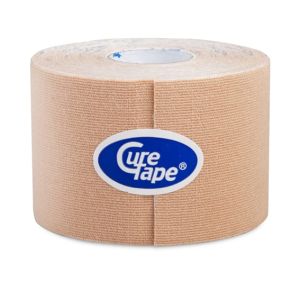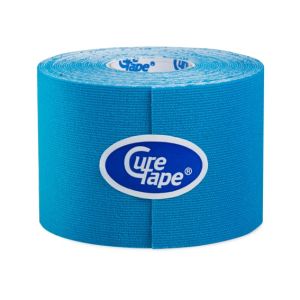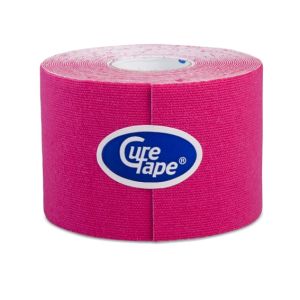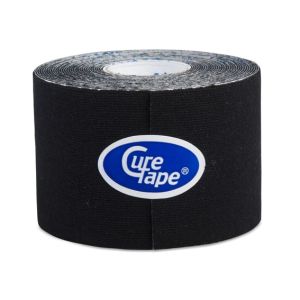How to use kinesiotape: when is it better to use this type of tape?
How to use kinesiotape: when is it better to use this type of tape?

Kinesiotape has established itself as an essential tool in the field of physiotherapy. It has a range of uses, from the treatment of sports injuries to improving mobility and relieving pain. In this article, we will look at the advanced techniques and many benefits of this multi-purpose method. We invite you to join us in this detailed analysis of the science and use of kinesiotape, exploring its potential to enrich physiotherapy treatments and offer significant improvements in the quality of life of the patients.
Kinesiotape consists of elastic taping designed to work as a neuromuscular tape, widely used in the world of professional physiotherapy to treat different types of injuries, slightly restricting the movement of the affected area.
They are very beneficial and offer powerful relief from muscle and joint pain, significantly speeding up recovery and allowing the person to continue with their physical activity, meaning that the athlete does not have to stop exercising.
However, it is also a treatment that people have many questions about and that is why Telic Fisio&Sport wants to tell you all about what this tape is, what benefits it offers and under what circumstances it is better to use kinesiotape, taping that has become very popular in recent years.
What is kinesiotape?
Kinesiotape, also known as kinesiology tape or muscle tape, is an elastic adhesive tape used in physiotherapy and sports medicine to provide support to muscles and joints, limiting but not completely restricting movement.
Developed in the 1970's in Japan, muscle tapes consist of an elastic tape made from braided cotton and an acrylic layer, adhering perfectly to the skin when they come in contact with it, promoting breathability.
In addition, it is completely waterproof and stretches to more than 130% of its original size, allowing good blood circulation and maintaining the proprioceptive sensitivity of the area to be treated intact.
Unlike traditional tapes, kinesiology tapes have a texture similar to human skin. The aim is to imitate the skin's elasticity and thickness, resulting in greater freedom of movement, unlike traditional tapes, adapting perfectly to the muscular contours and offering superior stability for tendons, ligaments and muscles.
When is the use of kinesiotape neuromuscular taping recommended?
Traditional functional taping works by limiting the range of motion of an injured joint, with the aim of preventing a recurrence of the movement that caused the injury and preventing it from worsening.
In contrast, neuromuscular taping prioritises the mobility of the area. It can be applied not only to treat joints, but also muscles and other tissues, without any restriction of movement, allowing the person to continue with their normal life and even continue training while the area is recovering.
That is why kinesiotape is increasingly used in sports therapy, both to recover and to prevent injuries in people who play sport on a daily basis, guaranteeing an excellent range of muscle mobility.
In general, the use of kinesiotape is recommended in the following cases, always under advice from a professional physiotherapist:
- Light support and movement:
Kinesiotape is especially useful when you need to provide light support to muscles or joints without significantly restricting the range of motion. It is more elastic than traditional tapes and offers greater freedom of movement.
- Sensory stimulation:
Neuromuscular taping can affect the sensory receptors in the skin, with an impact on pain perception and proprioception. In some cases, it is used to improve body awareness and reduce pain.
- Inflammation and oedemata:
Kinesiology tapes can improve blood and lymphatic circulation, which can help reduce swelling and oedemata, something that does not occur with traditional tapes.
- Recovery from muscle injuries:
In minor muscle injuries, kinesiotape promotes muscle recovery without restricting movement too much. It is also used to reduce muscle fatigue during physical activity.
- Holistic approach:
Kinesiotape is often associated with a more holistic and less restrictive approach compared to traditional taping. Many people prefer it both for its appearance and for the feeling of lightness it offers.
Basically, the choice of a traditional tape or kinesiotape will depend on the type and severity of the injury, the purpose of the treatment and the needs of the patient. If the athlete needs to remain more mobile, kinesiotape tapes will be more suitable, whereas if stronger support is needed, with more immobilisation or internal compression, conventional taping may be more appropriate.
The importance of using professional taping
The use of professional tapes and the right products is a key element of any muscle or joint recovery treatment. It is essential to use taping materials and techniques that meet the needs of each treatment to guarantee maximum effectiveness and avoid possible complications.
At Telic we offer a wide selection of professional taping products of the highest quality, including a wide variety of conventional and kinesiological tapes, as well as accessories to cover multiple needs.
We also have all types of consumables and accessories to equip any professional physiotherapy centre, such as gels, shavers, stretcher paper and single-use garments, as well as products for professional massage and specific products for sports massages from our OXD brand.
BIBLIOGRAPHY:
https://blog.herbitas.com/vendaje-neuromuscular-beneficios/
https://www.fisiofocus.com/es/articulo/que-beneficios-tiene-el-kinesiotaping

 Español
Español Français
Français







